General health issues and common ailments
Our pets can experience a range of health issues including osteoarthritis, heart and kidney disease. Find out about these conditions and other common ailments right here.
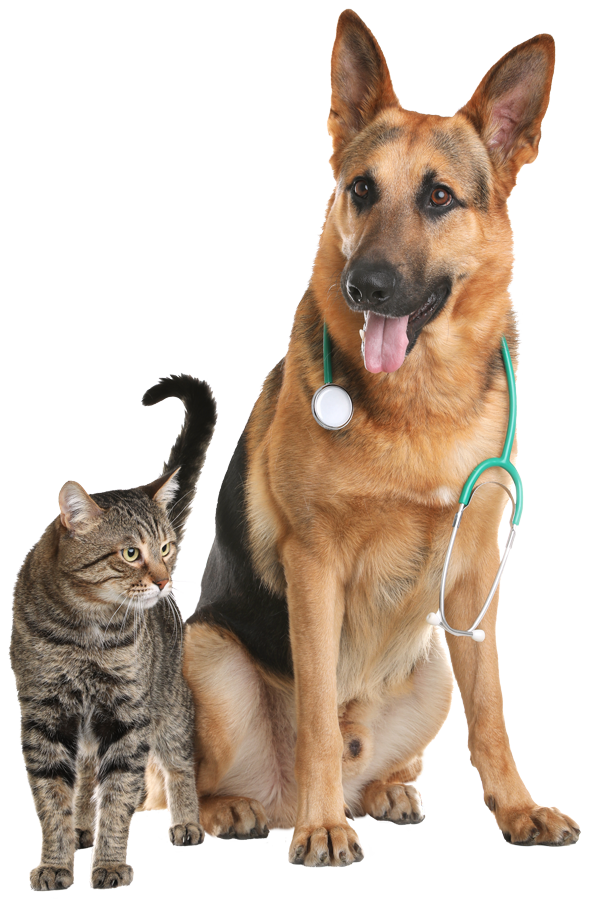

General Health Issues
Just like us our pets can experience a range of health issues. Find out about some of the more common conditions right here.
General Health Issues
During their lifetime our pets are likely to experience conditions such as osteoarthritis and potentially heart and kidney disease. With the growing epidemic of obesity, which even our pets are not immune too, diseases such as diabetes are all too common. But the most common complaint we see on a day-to-day basis at Fur life Vet involves ears!
From allergies through to pesky ear mites ears can be problematic if not treated when symptoms first arise. Often times ear problems are picked up accidentally when an animal is in at Fur Life Vet for an entirely different reason!
To help you understand and recognise the symptoms of some of the most common problems pets may encounter in their lifetime read through the information below. If you recognise any of the symptoms in your pet or you have any questions get in touch with your local Fur Life Vet today.
Osteoarthritis
What is osteoarthritis?
The pet form of osteoarthritis is the same as the human-form – the human form – inflammation of the bones and cartilage within joints that then causes pain and discomfort. It is a tell- tale sign that joints are suffering from wear and tear as the pet gradually deteriorates.
Osteoarthritis may:
- Stop your pet from being active
- Change the way they walk, run or bear weight
- Interfere with the quality time you spend together
Pets are living longer than ever before. While this allows us to spend more quality time with our furry friends, it also leaves us with an extra responsibility to ensure they live comfortably as they age.
Watch out for these symptoms:

Dogs
Dogs show pain in many different ways, plus osteoarthritis signs can develop over a period of time. It can be hard to work out if these behaviours are a normal part of aging, or something more.
Is your dog:
- Limping?
- Having trouble rising?
- Less active?
- Seem uncomfortable when exercising?
- Detached, irritable, or more dependent than previously?
- Chewing or licking their joints?
Some dogs may display one or more of these symptoms, however many cases of canine arthritis go undetected. If you’ve noticed any of these symptoms, a visit to the vet will be the best gift you can give your pooch this year.
Cats
Osteoarthritis in cats is very subtle as symptoms may be more behavioural than physical.
Is your cat:
- Reluctant to play or jump?
- Irritable?
- Seem uncomfortable when grooming?
- Inactive?
- Suffering from swollen joints?
- Limping?
These are common symptoms in arthritic cats. However, as many cats have a sedentary lifestyle (especially in their senior years), it may be difficult to spot they’re in pain. If you notice any of these symptoms, schedule a vet visit. Your furry feline will thank you for it!
Help your pet move into their senior years comfortably and pain free
All the ways your vet can help
They can:
- Diagnose your pet’s symptoms
- Provide tailored pain relief so your animal is comfortable
- Help protect against progression of the disease
- Suggest ways to manage your pet’s weight – which is often the single most important thing you can do to help your pet long term
- Offer a range of advice – about rest, exercise, physiotherapy and how to make your pet more comfy around the house (soft bedding, easily accessible litter trays or indoor ramps to help them get to their favourite spots)
Why it’s vital to schedule a vet revisit
If your pet is on NSAID medication, it’s really important you stick to your revisit vet schedule so they can regularly monitor your furry friend with check-ups and lab tests.
As lifestyle and medication needs can change over time, your friendly vet might suggest modifications along the way to make sure your best mate continues to live a long and healthy life.
Medication
While weight, diet modification and nutritional supplements can all play a role in managing osteoarthritis, so can medication – especially to alleviate your pet’s pain.
NSAIDS
Non-steroidal anti-inflammatory drugs (NSAIDS) are one of many options used to manage the condition. They do a few important things such as provide pain relief, reduce inflammation and protect against joint deterioration.
Side effects
As with all medications, side effects can occur.
Common ones are:
- A mild softening of your pet’s stools
- Loss of appetite
- Vomiting
- Diarrhoea
- Other gastrointestinal signs
If your pet becomes unwell or you suspect your pet is having problems with a medication, STOP it and CONTACT your vet.
Heart Disease
Making sure you take your pet to the vet for an annual health check is an important step in keeping your pet’s heart healthy. And as your pet ages a check-up every 6 months is highly recommended. Your pet’s heart is responsible for pumping blood to different parts of the body, (same as with our hearts) helping organs and muscles function properly and stay healthy. To do its job effectively your pet’s heart needs to be in tip-top-shape!

Heart disease and your dog
Heart disease is almost as common in dogs as in people. Most forms of heart disease cannot be prevented however heart disease caused by heartworm can easily be avoided with year-round preventatives. The most common form of heart disease in dogs is valvular disease, which primarily affects small breed dogs over 5 years. Diseases, such as dilated cardiomyopathy, primarily affects large breed dogs. Dogs are often at risk for certain types of heart disease depending on genetics, breed, age, and size.
Dog Breeds Commonly Affected by Heart Disease
- Doberman Pinschers
- Cocker Spaniels
- Great Danes
- Irish Wolfhounds
- Boxers
- Poodles
- Pekingese
- Boston Terriers
- Cavalier King Charles Spaniels

Heart disease and your cat
Heart disease is one of the leading cause of sudden death in cats from young to middle-aged. Cats are most commonly affected by a type of heart disease known as hypertrophic cardiomyopathy, in which the walls of the heart thicken and do not pump blood effectively. This can lead to heart failure. This type of heart disease can be found in cats of any age and because it is more common among some cat breeds than others, there may be a genetic predisposition.
Cat Breeds Commonly Affected by Heart Disease
- American Shorthair
- Maine Coon
- Persian
- Siamese
- Ragdoll
- Sphynx
Kidney Disease
The Facts
Kidney disease in cats
- Kidney disease will likely impact 1 in 3 cats or more!
- Certain diseases and hereditary conditions may make your cat more likely to develop kidney disease.
- Early diagnosis, before symptoms become obvious, can be key in identifying the cause of kidney disease.

Kidney disease in dogs
Kidney disease is very common in dogs with studies showing that 1 in 10 dogs may suffer from kidney disease. Dogs can get kidney disease for a number of reasons and it’s often difficult to spot. Some of the earliest signs of kidney disease in dogs may include weight loss, urinating more often and drinking more water than usual. If you notice your dog is urinating more frequently, having accidents inside or asking to go out more, or if your dog is always thirsty, it’s time to Get Vet Checked!
Symptoms of Chronic Kidney Disease
Both cats and dogs exhibit very similar signs when it comes to Chronic Kidney Disease (CKD). Unfortunately, these symptoms usually appear in the later stage of the disease.
- Increased/excessive thirst
- Frequent urination
- Subtle weight loss
- Tiredness
- Reduced appetite
- Vomiting
- Weight loss
- Bad breath with a chemical odour
- Mouth sores
What is kidney disease?
Kidneys are amazing little work horses in both humans and animals. These organs do all sorts of vital things like filter blood, process waste, balance body water levels and maintain red blood cells.
When they’re working at good capacity, all is well. But a dip in kidney function (which is the definition of kidney disease) has all sorts of consequences and if chronic, it can lead to failure. In pets, it’s pretty hard to detect until things start to get really bad and not much can be done to help.
SDMA – Changing the face of pet kidney disease diagnosis
A simple blood test is changing things for the better for Aussies pets and their owners. Read on to learn more about kidney disease, how it affects pets, the signs to watch out for, the SDMA early detection test and tips for caring for pets with kidney disease.
This test helps vets detect kidney function loss much earlier than previous tests – 45% loss as opposed to 75% loss.
Vets can then put proactive plans in place to help preserve pets’ kidney function, thereby giving them a better quality of life and hopefully, a much longer one too.
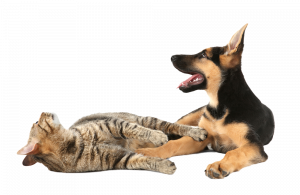
Common Causes
- Toxins
- Infections
- Cancer
- Kidney stones & associated blockages
- Inflammation & damage to tubes and/or filters
- Hereditary diseases in some breeds
Any of the above can lead to Chronic Kidney Disease (CKD)
Treatment
Waiting is the enemy when it comes to CKD. The longer you do, the more chance your pet’s kidney function will be severely reduced, permanently so. At this stage, treatment options are pretty limited, particularly as dialysis and transplants are not common for pets.
But there is some good news. A new blood test is giving vets the opportunity to detect kidney problems at a much earlier stage.
Tips for pet’s with CKD
- Give ‘em lots of fresh water
- Ensure they have quick & easy access to ‘go potty’ (ask a neighbour/friend/family member to help during the work day if need be)
- Consult with your vet to make sure they have a kidney-friendly diet
- Keep on top of any associated protein or high blood pressure issues with regular vet checks
- Be patient with them & their increased needs
Diabetes
Diabetes mellitus is a metabolic disorder that occurs when the body is unable to control blood sugar levels. There are two types of diabetes, Type I and Type II.
Type I
Also known as insulin dependent diabetes mellitus, occurs when the body is unable to produce insulin. Insulin is a hormone released when blood sugar levels are high, such as after meals, and directs cells in the body to move sugar out of the blood stream and into cells for storage or energy.
Type II
Unlike Type I, in Type II diabetes, insulin is being produced but the body becomes less responsive to its effects, which is why it is also called non-insulin-dependent diabetes mellitus. Regardless of the cause, both forms of diabetes result in chronically elevated blood sugar levels that damage capillaries and lead to different complications like nerve damage, kidney failure, and even death.
Symptoms of Diabetes (Dogs & cats)
- Excessive thirst
- Excessive urination – your pet produces more urine per day or has accidents in the house
- Excessive hunger while losing weight
- Lethargy (less active/sleeps more)
- Does not groom (cats)
- Cloudy eyes
- Thinning, dry, and dull fur
Risk Factors in Cats
- Obesity
- Age (older cats are more susceptible)
- Neutered males
- Genetics
- Other insulin-resistant disorders or diseases, such as:
- chronic pancreatitis (inflammation of the pancreas)
- hyperthyroidism (overproduction of thyroid hormones)
- Physical inactivity
- Indoor lifestyle
Risk Factors in Dogs
- Age (middle-aged to older dogs are more affected)
- Unspayed females
- Genetics
- Obesity
- Breed–these breeds have a higher risk for developing diabetes:
- Cocker Spaniels
- Dachshunds
- Dobermanns
- German Shepherds
- Golden Retrievers
- Labrador Retrievers
- Pomeranians
- Terriers
- Toy Poodles
- Miniature Schnauzers
- Keeshounds
Treatment
Fortunately, diabetes is manageable. With the right medications, diet and weight loss, diabetes can usually be controlled. The goal of treatment is to prevent high blood sugar or hyperglycemia. Insulin is the primary treatment for both dogs and cats. There are several different types of insulin available with different durations of action.
In addition to medications, diet and weight loss are just as important when it comes to treating diabetes in pets. Talk to your Fur Life Vet about what, if any, nutritional changes are necessary for your pet.
Weight loss is important because obesity is a common cause of insulin resistance. Fatty tissue releases factors that impair the effects of insulin. To promote weight loss, you should exercise your pets in addition to following your vet’s dietary suggestions. Encourage active play and exercise for both dogs and cats.

Ear Issues
Ear complaints are one of the most common issues with our pets and often are only diagnosed by chance!
If we had to name the most common issues we see every day with pets then problem ears would be high on the list if not at the top. And for the most part ear problems are identified secondary to the reason the pet was actually at the vet in the first place!

But here’s the pinch … ear issues can be darn painful for your pooch and if left untreated can become chronic, leading to hearing loss or hematomas due to the incessant head-shaking and scratching.
Don’t let your dog (or cat) suffer needlessly. Read about the common causes, symptoms and potential treatments below.
Causes
- Ear mites
- Foreign bodies like grass seeds
- Allergies
- Polyps or tumors
- Infection
- Conformation: Large floppy ears cover the canal, trap moisture and decrease airflow creating the perfect environment for bacteria and yeast.
Symptoms
- Shaking head
- Red inflamed ears
- Rubbing or scratching at ears
- Head tilt (carrying head on the side)
- Painful sensitive ears
- Ear discharge
- Dark brown or black build up in ears
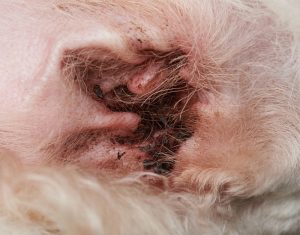
Treatment
The aim of treatment is to clean the ear, decrease inflammation, treat pain, and ultimately address the underlying cause.
Depending on the diagnosis, your Fur Life Vet will provide the appropriate medications and of course remove any foreign bodies that may have caused the inflammation and secondary infection.
Prevention
How do you prevent ear infections?
We have provided a few simple tips below and some extra information on one of the most common ear problems … those pesky ear mites!
All About Ear Mites!
If your best friend is constantly scratching his ears and shaking his head, or you smell something less than pleasant coming from his ears, the culprit may be ear mites.
Ear mites look like miniscule crabs. Their preferred environment is your dog’s ear canal, although they can move out of the ear to the hosts head and body.
What’s particularly unpleasant about these little crab-like mites is what they eat: namely, your dog! They love to feed on tissue and fluids inside the ear canal.
Ear mites are most commonly found in puppies and dogs that have poor immune systems (and they can also be found in cats). They have a three-week life cycle and reproduce rapidly.
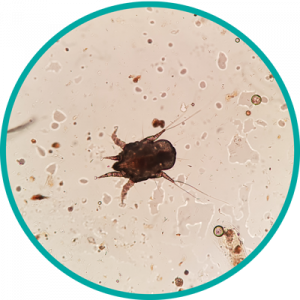
Symptoms of Ear Mite include:
- Scratching
- Increased earwax
- Thick, black-colored ear discharge
- Head shaking
- Sores around or on the ears
- Itching of the head and neck
Diagnosis
Your Fur Life Vet may do the following test to determine if your pooch has Ear Mite.
- Ear swab and microscopic evaluation to identify the presence of the mites
- Visual inspection of the ear canal with an otoscope
- Other routine laboratory tests such as blood work, a chemistry profile, and electrolytes to screen for organ function, infection, and electrolyte status if your dog or puppy is in poor body condition or lethargic
- Feacal tests to rule out other parasites
Treatment
Your Fur Life Vet will clean your dog’s ears while he or she is there for her exam and most likely prescribe parasiticides that will kill the mites, and recommend an ear cleaner to keep the ear canal clean of debris.
Looking after your pet’s ears
Keep your pet’s ears clean!
Some breeds of dogs are prone to ear infections and benefit from having their ears cleaned regularly.
Never use water, alcohol or peroxide. Make sure you use an ear cleaner designed for pets. Ear cleaners are gentle and formulated for use in the ear. Next time you are at your Fur Life Vet ask them to show you how to properly and safely clean your pet’s ears.
Keep your pet’s ears dry.
Excessive moisture predisposes pets to ear infections, so try not to get water in your pet’s ears when bathing them and try to limit swimming if your pet has a history of ear infections.
Catch and treat ear infections early.
Know the symptoms of an ear infection so you can recognise them in your pet. If your pet is shaking their head, scratching at their ears, or has foul-smelling discharge from their ears, Get veet Checked!
Early intervention can help avoid the problems associated with chronic ear infections.

Guide to cleaning your pet’s ears
Step One Preparation
Clean and trim the outside of the dogs ear and ear flap to remove excess, matted or dirty hair.
The first step in cleaning your dogs ears is all about general grooming. Start by carefully grooming and trimming any excess, matted or dirty hair from around the ear flap and canal. Hair that is matted, dense or dirty around the ear flaps can restrict air flow to the ear canal creating a warm and moist environment that allows wax and other debris to build up that resulting in ear infections. If your dog has hair that is growing within the ear canals you will need to take extra care to avoid damaging the ear canal or creating additional discomfort for you dog. In these circumstances it is best to seek assistance from your vet or a professional and qualified groomer.
Make sure you talk to your Fur Life Vet about the best ear cleaning solution for your dog.
Step Two – Cleaning
Cleaning your dog’s ears – be gentle!
Remember pets ear canals and flaps are very sensitive. Over harsh cleaning can cause injury or even serious damage to the structure of the inner ear!
Gently lift the ear flap and dribble a small amount of the cleaning fluid into the ear. Do not overflow the ear canal, just enough fluid to fill the ear. Now gently massage the base of your dogs ear for roughly 30 seconds. You should hear a squishing sound as the liquid is moved around inside the ear canal. This exercise should not be painful to you dog in any way. If it is you should have your vet examine your pets ears immediately. Repeat the process with the other ear.
Step back – your dog will likely give his head a good shake!
In shaking his head your dog will help to bring the wax and dirt up out of the ear canal. Take a clean cotton ball and gently wipe the inside of the ear removing any wax or dirt and excess cleaning solution you see.
Do not use cotton buds! If you place the cotton bud too deeply into the ear you may damage the ear drum causing permanent hearing loss and pain for your pet.
Gently and patiently clean the ear with soft cotton balls. For smaller dogs it might be wise to use half a cotton ball.
Step Three – How Often?
How Often Should I Clean My Dog’s Ears?
The regularity with which you clean your dog’s ears depends on your pet’s breed, coat, level of activity, age, and ear wax production.
At Fur Life Vet we recommend cleaning at least once a month. Some dogs may need their ears cleaned more frequently , especially if they regularly swim or get their ears wet.
Osteoarthritis
What is osteoarthritis?
The pet form of osteoarthritis is the same as the human-form – the human form – inflammation of the bones and cartilage within joints that then causes pain and discomfort. It is a tell- tale sign that joints are suffering from wear and tear as the pet gradually deteriorates.
Osteoarthritis may:
- Stop your pet from being active
- Change the way they walk, run or bear weight
- Interfere with the quality time you spend together
Pets are living longer than ever before. While this allows us to spend more quality time with our furry friends, it also leaves us with an extra responsibility to ensure they live comfortably as they age.
Watch out for these symptoms:

Dogs
Dogs show pain in many different ways, plus osteoarthritis signs can develop over a period of time. It can be hard to work out if these behaviours are a normal part of aging, or something more.
Is your dog:
- Limping?
- Having trouble rising?
- Less active?
- Seem uncomfortable when exercising?
- Detached, irritable, or more dependent than previously?
- Chewing or licking their joints?
Some dogs may display one or more of these symptoms, however many cases of canine arthritis go undetected. If you’ve noticed any of these symptoms, a visit to the vet will be the best gift you can give your pooch this year.
Cats
Osteoarthritis in cats is very subtle as symptoms may be more behavioural than physical.
Is your cat:
- Reluctant to play or jump?
- Irritable?
- Seem uncomfortable when grooming?
- Inactive?
- Suffering from swollen joints?
- Limping?
These are common symptoms in arthritic cats. However, as many cats have a sedentary lifestyle (especially in their senior years), it may be difficult to spot they’re in pain. If you notice any of these symptoms, schedule a vet visit. Your furry feline will thank you for it!
Help your pet move into their senior years comfortably and pain free
All the ways your vet can help
They can:
- Diagnose your pet’s symptoms
- Provide tailored pain relief so your animal is comfortable
- Help protect against progression of the disease
- Suggest ways to manage your pet’s weight – which is often the single most important thing you can do to help your pet long term
- Offer a range of advice – about rest, exercise, physiotherapy and how to make your pet more comfy around the house (soft bedding, easily accessible litter trays or indoor ramps to help them get to their favourite spots)
Why it’s vital to schedule a vet revisit
If your pet is on NSAID medication, it’s really important you stick to your revisit vet schedule so they can regularly monitor your furry friend with check-ups and lab tests.
As lifestyle and medication needs can change over time, your friendly vet might suggest modifications along the way to make sure your best mate continues to live a long and healthy life.
Medication
While weight, diet modification and nutritional supplements can all play a role in managing osteoarthritis, so can medication – especially to alleviate your pet’s pain.
NSAIDS
Non-steroidal anti-inflammatory drugs (NSAIDS) are one of many options used to manage the condition. They do a few important things such as provide pain relief, reduce inflammation and protect against joint deterioration.
Side effects
As with all medications, side effects can occur.
Common ones are:
- A mild softening of your pet’s stools
- Loss of appetite
- Vomiting
- Diarrhoea
- Other gastrointestinal signs
If your pet becomes unwell or you suspect your pet is having problems with a medication, STOP it and CONTACT your vet.
Heart Disease and your pet


Making sure you take your pet to the vet for an annual health check is an important step in keeping your pet’s heart healthy. And as your pet ages a check-up every 6 months is highly recommended. Your pet’s heart is responsible for pumping blood to different parts of the body, (same as with our hearts) helping organs and muscles function properly and stay healthy. To do its job effectively your pet’s heart needs to be in tip-top-shape!
Heart disease and your cat
Heart disease is one of the leading cause of sudden death in cats from young to middle-aged. Cats are most commonly affected by a type of heart disease known as hypertrophic cardiomyopathy, in which the walls of the heart thicken and do not pump blood effectively. This can lead to heart failure. This type of heart disease can be found in cats of any age and because it is more common among some cat breeds than others, there may be a genetic predisposition.
Heart disease and your dog
Heart disease is almost as common in dogs as in people. Most forms of heart disease cannot be prevented however heart disease caused by heartworm can easily be avoided with year-round preventatives. The most common form of heart disease in dogs is valvular disease, which primarily affects small breed dogs over 5 years. Diseases, such as dilated cardiomyopathy, primarily affects large breed dogs. Dogs are often at risk for certain types of heart disease depending on genetics, breed, age, and size.
Cat Breeds Commonly Affected by Heart Disease
- American Shorthair
- Maine Coon
- Persian
- Siamese
- Ragdoll
- Sphynx
Dog Breeds Commonly Affected by Heart Disease
- Doberman Pinschers
- Cocker Spaniels
- Great Danes
- Irish Wolfhounds
- Boxers
- Poodles
- Pekingese
- Boston Terriers
- Cavalier King Charles Spaniels
Kidney Disease – The facts
In their lifetime, over 1 in 3 cats and 1 in 10 dogs will get kidney disease. And they typically do not show any signs of illness until their kidneys have lost most of their function permanently. As pets age, the likelihood pets will develop kidney disease worsens. In fact, more than half of cats over age 15 have this debilitating disease!
Kidney disease in cats
- Kidney disease will likely impact 1 in 3 cats or more!
- Certain diseases and hereditary conditions may make your cat more likely to develop kidney disease.
- Early diagnosis, before symptoms become obvious, can be key in identifying the cause of kidney disease.
Kidney disease in dogs
Kidney disease is very common in dogs with studies showing that 1 in 10 dogs may suffer from kidney disease. Dogs can get kidney disease for a number of reasons and it’s often difficult to spot. Some of the earliest signs of kidney disease in dogs may include weight loss, urinating more often and drinking more water than usual. If you notice your dog is urinating more frequently, having accidents inside or asking to go out more, or if your dog is always thirsty, it’s time to Get Vet Checked!

Symptoms of Chronic Kidney Disease
Both cats and dogs exhibit very similar signs when it comes to Chronic Kidney Disease (CKD). Unfortunately, these symptoms usually appear in the later stage of the disease.
- Increased/excessive thirst
- Frequent urination
- Subtle weight loss
- Tiredness
- Reduced appetite
- Vomiting
- Weight loss
- Bad breath with a chemical odour
- Mouth sores
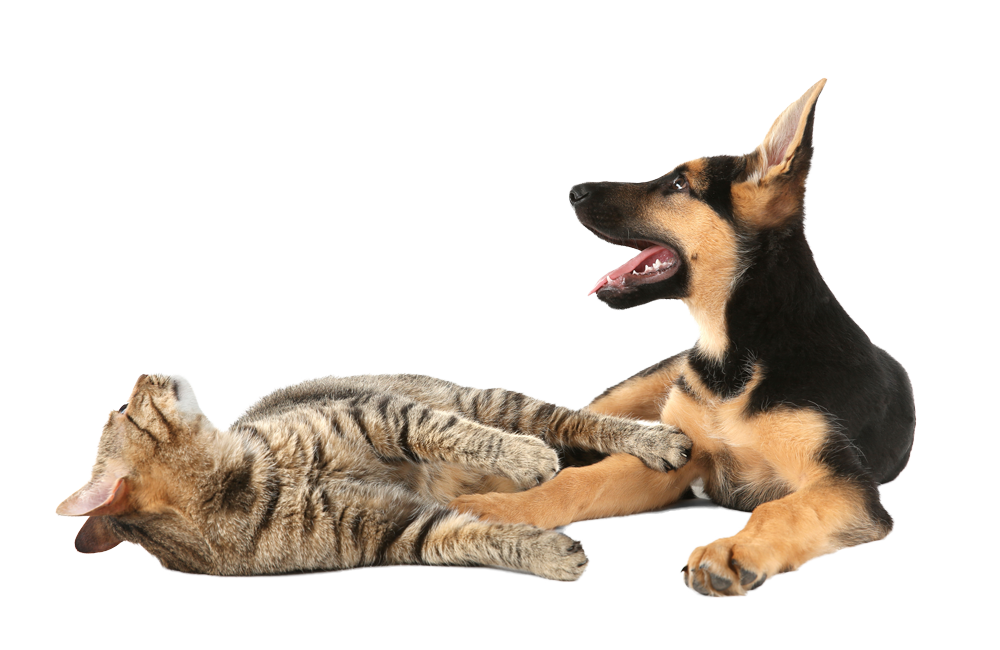
What is kidney disease?
Kidneys are amazing little work horses in both humans and animals. These organs do all sorts of vital things like filter blood, process waste, balance body water levels and maintain red blood cells.
When they’re working at good capacity, all is well. But a dip in kidney function (which is the definition of kidney disease) has all sorts of consequences and if chronic, it can lead to failure. In pets, it’s pretty hard to detect until things start to get really bad and not much can be done to help.
SDMA – Changing the face of pet kidney disease diagnosis
A simple blood test is changing things for the better for Aussies pets and their owners. Read on to learn more about kidney disease, how it affects pets, the signs to watch out for, the SDMA early detection test and tips for caring for pets with kidney disease.
This test helps vets detect kidney function loss much earlier than previous tests – 45% loss as opposed to 75% loss.
Vets can then put proactive plans in place to help preserve pets’ kidney function, thereby giving them a better quality of life and hopefully, a much longer one too.
Common Causes
- Toxins
- Infections
- Cancer
- Kidney stones & associated blockages
- Inflammation & damage to tubes and/or filters
- Hereditary diseases in some breeds
Any of the above can lead to Chronic Kidney Disease (CKD)
Treatment
Waiting is the enemy when it comes to CKD. The longer you do, the more chance your pet’s kidney function will be severely reduced, permanently so. At this stage, treatment options are pretty limited, particularly as dialysis and transplants are not common for pets.
But there is some good news. A new blood test is giving vets the opportunity to detect kidney problems at a much earlier stage.
Tips for pets with CKD
- Give ‘em lots of fresh water
- Ensure they have quick & easy access to ‘go potty’ (ask a neighbour/friend/family member to help during the work day if need be)
- Consult with your vet to make sure they have a kidney-friendly diet
- Keep on top of any associated protein or high blood pressure issues with regular vet checks
- Be patient with them & their increased needs
Diabetes and your pet
Diabetes mellitus is a metabolic disorder that occurs when the body is unable to control blood sugar levels. There are two types of diabetes, Type I and Type II.
Type I
Also known as insulin dependent diabetes mellitus, occurs when the body is unable to produce insulin. Insulin is a hormone released when blood sugar levels are high, such as after meals, and directs cells in the body to move sugar out of the blood stream and into cells for storage or energy.
Type II
Unlike Type I, in Type II diabetes, insulin is being produced but the body becomes less responsive to its effects, which is why it is also called non-insulin-dependent diabetes mellitus. Regardless of the cause, both forms of diabetes result in chronically elevated blood sugar levels that damage capillaries and lead to different complications like nerve damage, kidney failure, and even death.
Risk Factors in Cats
- Obesity
- Age (older cats are more susceptible)
- Neutered males
- Genetics
- Other insulin-resistant disorders or diseases, such as:
- chronic pancreatitis (inflammation of the pancreas)
- hyperthyroidism (overproduction of thyroid hormones)
- Physical inactivity
- Indoor lifestyle
Symptoms of Diabetes (Dogs & cats)
- Excessive thirst
- Excessive urination – your pet produces more urine per day or has accidents in the house
- Excessive hunger while losing weight
- Lethargy (less active/sleeps more)
- Does not groom (cats)
- Cloudy eyes
- Thinning, dry, and dull fur
Risk Factors in Dogs
- Age (middle-aged to older dogs are more affected)
- Unspayed females
- Genetics
- Obesity
- Breed–these breeds have a higher risk for developing diabetes:
- Cocker Spaniels
- Dachshunds
- Dobermanns
- German Shepherds
- Golden Retrievers
- Labrador Retrievers
- Pomeranians
- Terriers
- Toy Poodles
- Miniature Schnauzers
- Keeshounds

Treatment
Fortunately, diabetes is manageable. With the right medications, diet and weight loss, diabetes can usually be controlled. The goal of treatment is to prevent high blood sugar or hyperglycemia. Insulin is the primary treatment for both dogs and cats. There are several different types of insulin available with different durations of action.
In addition to medications, diet and weight loss are just as important when it comes to treating diabetes in pets. Talk to your Fur Life Vet about what, if any, nutritional changes are necessary for your pet.
Weight loss is important because obesity is a common cause of insulin resistance. Fatty tissue releases factors that impair the effects of insulin. To promote weight loss, you should exercise your pets in addition to following your vet’s dietary suggestions. Encourage active play and exercise for both dogs and cats.
Ear complaints are one of the most common issues with our pets and often are only diagnosed by chance!

If we had to name the most common issues we see every day with pets then problem ears would be high on the list if not at the top. And for the most part ear problems are identified secondary to the reason the pet was actually at the vet in the first place!
But here's the pinch ... ear issues can be darn painful for your pooch and if left untreated can become chronic, leading to hearing loss or hematomas due to the incessant head-shaking and scratching.
Don't let your dog (or cat) suffer needlessly. Read about the common causes, symptoms and potential treatments below.
Causes
- Ear mites
- Foreign bodies like grass seeds
- Allergies
- Polyps or tumors
- Infection
- Conformation: Large floppy ears cover the canal, trap moisture and decrease airflow creating the perfect environment for bacteria and yeast.
Symptoms
- Shaking head
- Red inflamed ears
- Rubbing or scratching at ears
- Head tilt (carrying head on the side)
- Painful sensitive ears
- Ear discharge
- Dark brown or black build up in ears
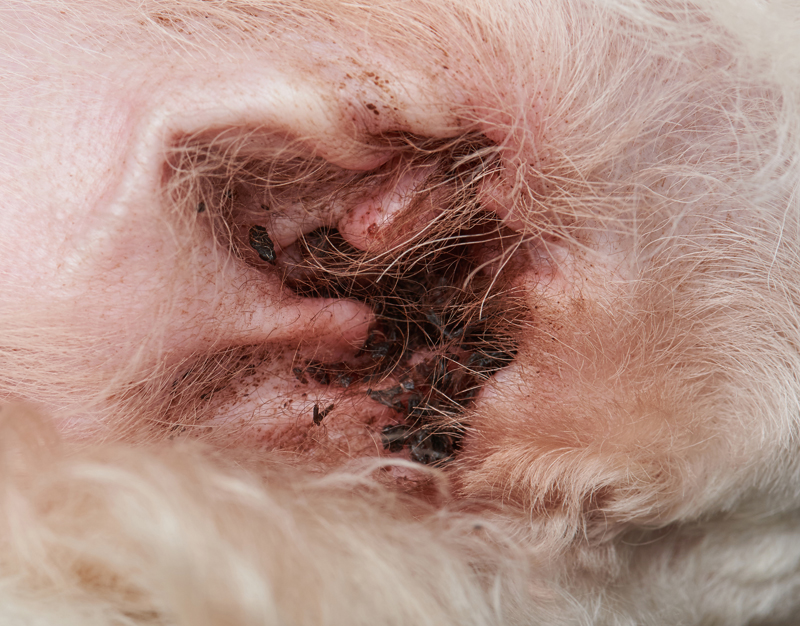
Treatment
The aim of treatment is to clean the ear, decrease inflammation, treat pain, and ultimately address the underlying cause.
Depending on the diagnosis, your Fur Life Vet will provide the appropriate medications and of course remove any foreign bodies that may have caused the inflammation and secondary infection.
Prevention
How do you prevent ear infections?
We have provided a few simple tips below and some extra information on one of the most common ear problems ... those pesky ear mites!
All About Ear Mites
 If your best friend is constantly scratching his ears and shaking his head, or you smell something less than pleasant coming from his ears, the culprit may be ear mites.
If your best friend is constantly scratching his ears and shaking his head, or you smell something less than pleasant coming from his ears, the culprit may be ear mites.
Ear mites look like miniscule crabs. Their preferred environment is your dog’s ear canal, although they can move out of the ear to the hosts head and body.
What’s particularly unpleasant about these little crab-like mites is what they eat: namely, your dog! They love to feed on tissue and fluids inside the ear canal.
Ear mites are most commonly found in puppies and dogs that have poor immune systems (and they can also be found in cats). They have a three-week life cycle and reproduce rapidly.
Symptoms of Ear Mite include:
- Scratching
- Increased earwax
- Thick, black-colored ear discharge
- Head shaking
- Sores around or on the ears
- Itching of the head and neck
Diagnosis
Your Fur Life Vet may do the following test to determine if your pooch has Ear Mite.
- Ear swab and microscopic evaluation to identify the presence of the mites
- Visual inspection of the ear canal with an otoscope
- Other routine laboratory tests such as blood work, a chemistry profile, and electrolytes to screen for organ function, infection, and electrolyte status if your dog or puppy is in poor body condition or lethargic
- Fecal tests to rule out other parasites
Treatment
Your Fur Life Vet will clean your dog’s ears while he or she is there for her exam and most likely prescribe parasiticides that will kill the mites, and recommend an ear cleaner to keep the ear canal clean of debris.
Looking after your pet's ears
Keep your pet’s ears clean!
Some breeds of dogs are prone to ear infections and benefit from having their ears cleaned regularly.
Never use water, alcohol or peroxide. Make sure you use an ear cleaner designed for pets. Ear cleaners are gentle and formulated for use in the ear. Next time you are at your Fur Life Vet ask them to show you how to properly and safely clean your pet’s ears.
Keep your pet’s ears dry.
Excessive moisture predisposes pets to ear infections, so try not to get water in your pet’s ears when bathing them and try to limit swimming if your pet has a history of ear infections.
Guide to cleaning your pet's ears
Step One – Preparation
Clean and trim the outside of the dogs ear and ear flap to remove excess, matted or dirty hair.
The first step in cleaning your dogs ears is all about general grooming. Start by carefully grooming and trimming any excess, matted or dirty hair from around the ear flap and canal. Hair that is matted, dense or dirty around the ear flaps can restrict air flow to the ear canal creating a warm and moist environment that allows wax and other debris to build up that resulting in ear infections. If your dog has hair that is growing within the ear canals you will need to take extra care to avoid damaging the ear canal or creating additional discomfort for you dog. In these circumstances it is best to seek assistance from your vet or a professional and qualified groomer.
Make sure you talk to your Fur Life Vet about the best ear cleaning solution for your dog.
Step Two – Cleaning
Cleaning your dog's ears – be gentle!
Remember pets ear canals and flaps are very sensitive. Over harsh cleaning can cause injury or even serious damage to the structure of the inner ear!
Gently lift the ear flap and dribble a small amount of the cleaning fluid into the ear. Do not overflow the ear canal, just enough fluid to fill the ear. Now gently massage the base of your dogs ear for roughly 30 seconds. You should hear a squishing sound as the liquid is moved around inside the ear canal. This exercise should not be painful to you dog in any way. If it is you should have your vet examine your pets ears immediately. Repeat the process with the other ear.
Step back – your dog will likely give his head a good shake!
In shaking his head your dog will help to bring the wax and dirt up out of the ear canal. Take a clean cotton ball and gently wipe the inside of the ear removing any wax or dirt and excess cleaning solution you see.
Do not use cotton buds! If you place the cotton bud too deeply into the ear you may damage the ear drum causing permanent hearing loss and pain for your pet.
Gently and patiently clean the ear with soft cotton balls. For smaller dogs it might be wise to use half a cotton ball.
Step Four – How often
How Often Should I Clean My Dog’s Ears?
The regularity with which you clean your dog’s ears depends on your pet's breed, coat, level of activity, age, and ear wax production.
At Fur Life Vet we recommend cleaning at least once a month. Some dogs may need their ears cleaned more frequently , especially if they regularly swim or get their ears wet.
Catch and treat ear infections early.
Know the symptoms of an ear infection so you can recognise them in your pet. If your pet is shaking their head, scratching at their ears, or has foul-smelling discharge from their ears, Get veet Checked!
Early intervention can help avoid the problems associated with chronic ear infections.

Your Local Fur Life Vet
Warrnambool Veterinary
Warrnambool 03 5559 0222
Port Fairy 03 5568 6222
Koroit 03 5559 0260
Nullawarre 03 5559 0270
Follow us on Facebook
Keep up-to-date with our latest services, offers and events. And dont forget to subscribe to our super cool eNewsletter too!

